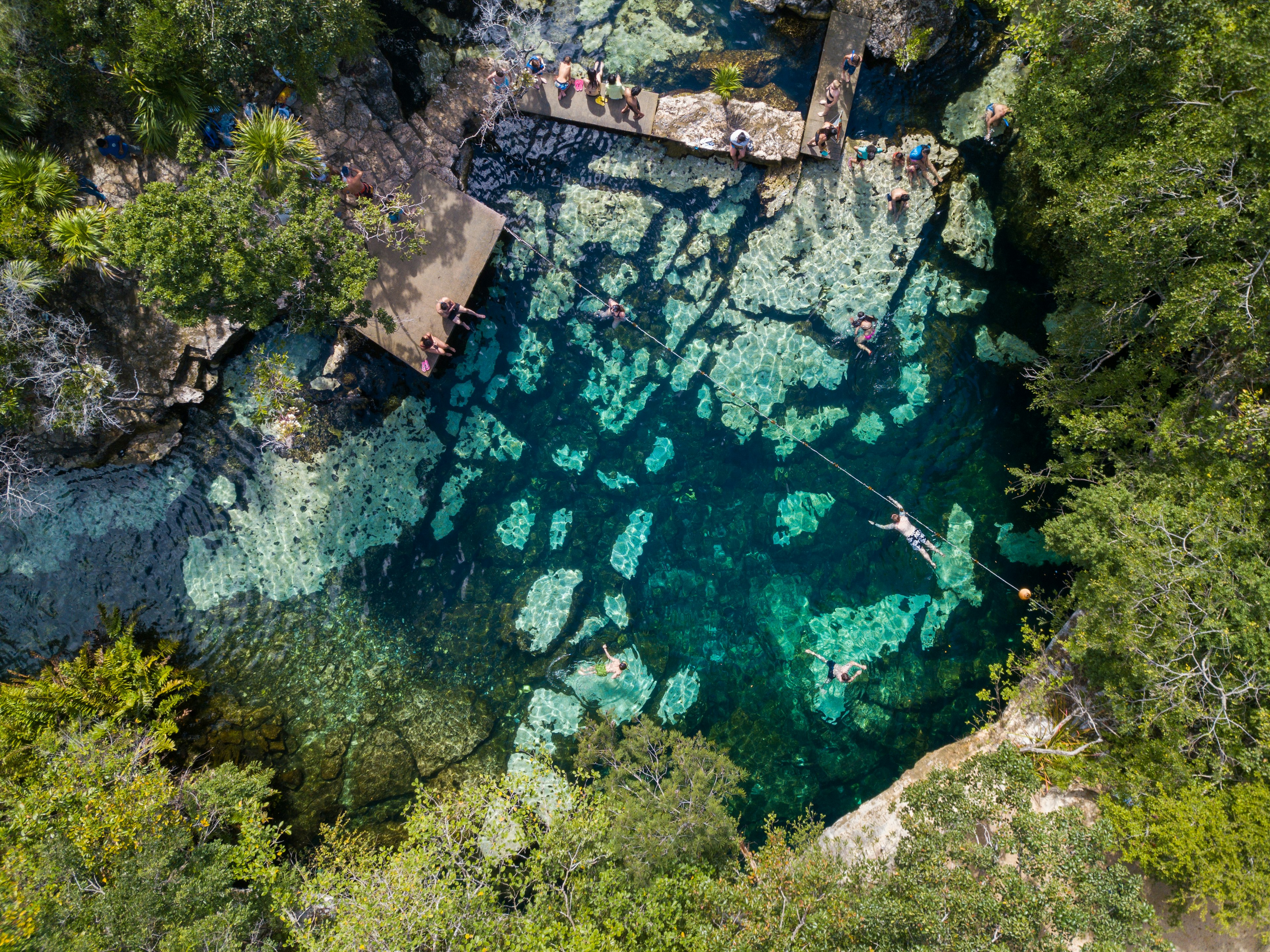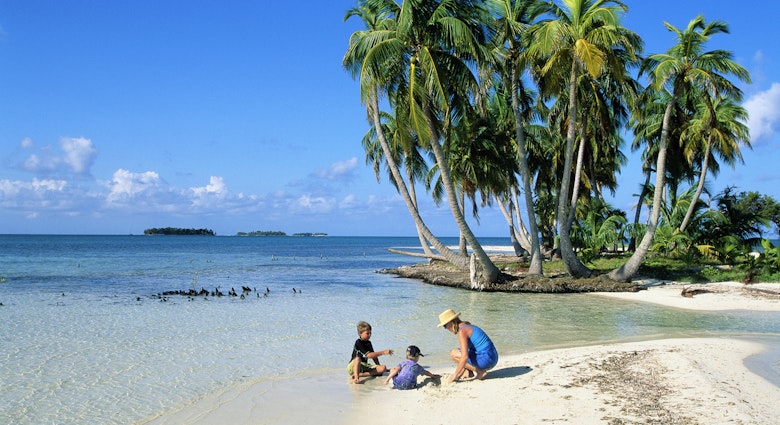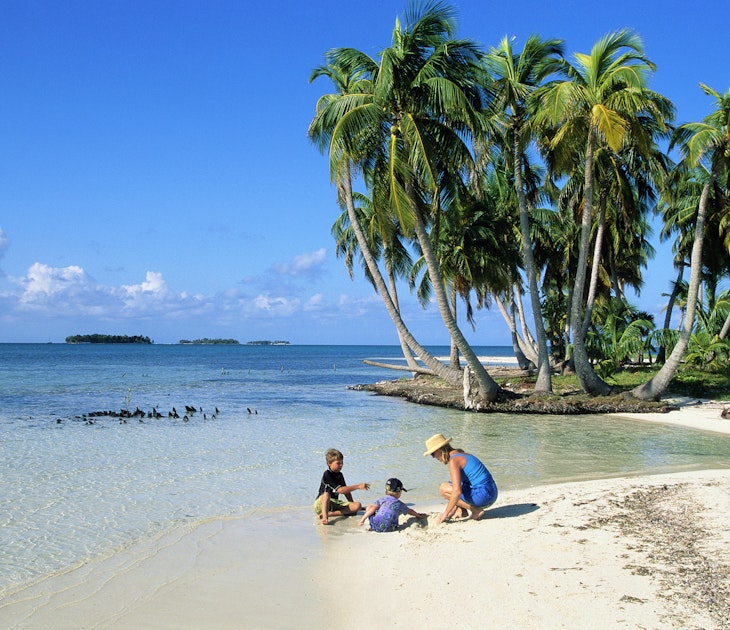

Visiting °ä²¹²Ô³¦Ãº²Ô doesn't have to blow your budget – here are our best money saving tips © Guajillo studio/Shutterstock
With its luxurious all-inclusives, flashy nightclubs and pricey waterfront restaurants, °ä²¹²Ô³¦Ãº²Ô can feel like a playground for wealthy visitors – but there are ways to do it on a budget. You just need to know how.
Downtown, for instance, has plenty of good-value accommodations and savory Yucatecan eats that won't empty your wallet. And then there's the hotel zone's star attraction – a swath of mesmerizing beaches lapped by the Caribbean Sea that won't cost you a single peso.
Here are some insider tips on how to stretch your budget in °ä²¹²Ô³¦Ãº²Ô and what you can expect to spend per day when you're trying to stretch those pesos.
Daily costs
Hostel: M$300-550 (dorm bed)
Basic room for two: M$900-1300
Self-catering apartment (including Airbnb): M$1000-2500
Public transport: M$12
Coffee: M$40-70
Beer: M$40-100
Mezcal or tequila shot: M$100-200
Tacos: M$15-30
Sandwich or torta: M$40-200
Dinner for two: M$500-800
Average daily cost: M$1800-2500
1. Steer clear of the peak seasons
°ä²¹²Ô³¦Ãº²Ô's costly peak travel season runs from December to April. It comes with an even steeper price tag around Christmas, New Year's and spring break when airline, hotel and car rental rates skyrocket.
During spring break – usually around March – hordes of college students descend on the megaresorts to let it all hang out at wild fiestas in the beach clubs, bars and thumping discos, giving the city an overcrowded and boozy anything-goes vibe. For quieter and more affordable times, come during the low-season months of May, June, September and October.

2. Eat like a local in atmospheric markets and taco joints
To get some serious bang for your buck, not to mention authentic eats that would have made Anthony Bourdain smile, hit the downtown market stalls and moderately priced restaurants specializing in homestyle Yucatecan fare.
For regional classics such as panuchos (fried tortilla snacks), sopa de lima (Mexican lime soup) and cochinita pibil (slow-cooked pulled pork), you'll find dozens of informal cafes lining the aisles of Mercado 23 and Mercado 28.
Also, some downtown establishments feature a menú del dÃa, a ridiculously cheap three-course lunch that may or may not induce a food coma.
Come nighttime, wrap your fingers around the al pastor (spit-cooked marinated pork) tacos at TaquerÃa Coapeñitos, or get some munchies at hotel zone hole-in-the-wall .
3. Catch the economical airport bus
Upon arrival at the °ä²¹²Ô³¦Ãº²Ô International Airport, look for the red that run frequently from the terminals to the downtown bus station. They cost about a third of what the airport taxis charge, but they don’t go to the hotel zone – you'll have to take an airport shuttle if you're staying on that side of town.
4. Stay in downtown or a hotel zone hostel
Many budget-conscious travelers like to stay in the hostels, guesthouses and hotels clustered around downtown's Parque de las Palapas, Avenida Yaxchilán and the ADO bus station, in the heart of the Centro.
Tried-and-true faves include , a convivial hostel sporting a rooftop bar and pool, or , which has great low-season rates for its impeccably spacious rooms.
Lodging, food and transportation tend to cost less in the downtown area. Nevertheless, it's possible to find several reasonably priced digs in the hotel zone: and put you within stumbling distance of the party zone, but book ahead as rooms and dorm beds go fast.

5. Plunge into inexpensive cenotes
In °ä²¹²Ô³¦Ãº²Ô's outlying areas, you’ll find dozens of sublime jungle-set cenotes (sinkholes, caverns and underground rivers) that are ideal for swimming, snorkeling, and in some cases, diving.
Admissions range from M$150 to M$500, depending on the activity and equipment needed. The bulk of them are fairly budget-friendly, considering that you can easily spend a half-day frolicking in otherworldly natural wonders.
6. Spend in Mexican pesos and use fee-free credit cards
Most hotels and restaurants will gladly accept US dollars, but with the caveat that you probably won't get a great exchange rate. Even cab drivers typically charge more when quoting fares in US dollars – whenever possible, pay with Mexican pesos.
When using plastic, take into account that you may get hit with foreign transaction fees for ATM withdrawals and debit card purchases.
Some major credit cards have no transaction fees, making them the smartest payment option if you want to save money. °ä²¹²Ô³¦Ãº²Ô's ATMs dispense Mexican pesos.
7. Hop on the bus for the cheapest ride in town
At just M$12 a ride, °ä²¹²Ô³¦Ãº²Ô's city buses cost a fraction of what you would pay for taxis, plus you eliminate the hassle of having to negotiate overpriced cab fares.
Lines R-1, R-2 and R-27 run about every 10 minutes between downtown and the hotel zone, allowing you to zip back and forth with ease between the beaches and °ä²¹²Ô³¦Ãº²Ô Centro.
R-1 stops at the ADO first-class bus station along downtown's main drag, Avenida Tulum, and then it follows a route through the L-shaped hotel zone, a barrier island spanning about 24km (15 miles).
8. Pile into shared vans to explore °ä²¹²Ô³¦Ãº²Ô's outlying areas
Locals often get around °ä²¹²Ô³¦Ãº²Ô and its surrounding areas in low-cost shared vans, known as colectivos, and it makes perfect sense once you see how convenient and relatively affordable they are.
To reach downtown's Isla Mujeres ferry terminal, hail a "Puerto Juárez" colectivo from a stop across from the ADO bus station.
Isla Mujeres makes for an easy day trip from °ä²¹²Ô³¦Ãº²Ô and the scenic 20-minute crossing won't break the bank. To reach the Riviera Maya beach towns south of °ä²¹²Ô³¦Ãº²Ô, air-conditioned Playa Express vans are cheaper and faster than most buses, and they'll drop you off at any point along the highway, including the turnoff to the underrated Puerto Morelos. The vans depart from a parking lot in the ADO station.

9. Find out why the best things in °ä²¹²Ô³¦Ãº²Ô are free
We might be going out on a limb here, but we're guessing that beach time sits high on your °ä²¹²Ô³¦Ãº²Ô to-do list, and since it costs absolutely nada, we have a few additional tips for you.
If you're traveling with children, hit the hotel zone's north-facing beaches, such as Playa Las Perlas and Playa Langosta, where the calm, swimmer-friendly waters feel more like a lake.
Alternatively, the beaches hugging the east shore, such as Playa MarlÃn and eco-friendly Playa DelfÃnes, may have strong undercurrents, but the Caribbean Sea along the coastline is downright breathtaking.
For a cool stroll, walk about 1km (0.6 miles) north of Playa MarlÃn to the weathered remains of Yamil Lu'um, a small Maya structure known as the Scorpion's Temple. Used as a place of worship by maritime settlers from 1200 to 1550 CE, the ancient ruins stand in stark contrast to the backdrop of sleek hotels.
10. Any other ways to pinch pesos?
Many hotels, apartments and guesthouses in °ä²¹²Ô³¦Ãº²Ô come with full kitchens, allowing you to reduce travel expenses by self-catering. In some hotels, children can stay for free, while various attractions, long-distance buses and ferries provide discounted prices for kids.
Family-run hotels often cut guests a deal for multiple-night stays or payments in cash. In the off-season, some of the large resorts run promos offering essentially high-end rooms at midrange rates.
Explore related stories



 ArchaeologyWhat does Chichén Itzá mean? Unveiling the name and history of this Maya wonder
ArchaeologyWhat does Chichén Itzá mean? Unveiling the name and history of this Maya wonderNov 10, 2024 • 8 min read




 OutdoorsThe best places for solo travelers in North America and the Caribbean
OutdoorsThe best places for solo travelers in North America and the CaribbeanJul 14, 2024 • 11 min read


